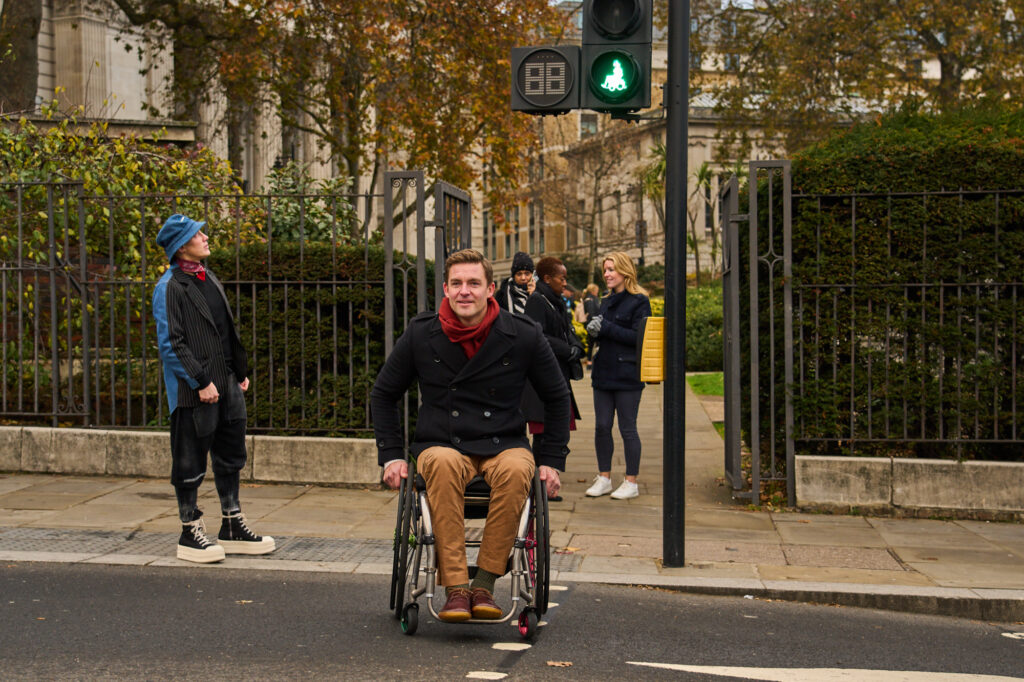
15 Dec 2023
British Olympic rower Pete Reed lends his voice to accessibility campaign
 Sunday 3 December was the International Day of Persons with Disabilities – a day promoted by the United Nations to promote the rights and well-being of persons with disabilities in all spheres of society and development.
Sunday 3 December was the International Day of Persons with Disabilities – a day promoted by the United Nations to promote the rights and well-being of persons with disabilities in all spheres of society and development.
In London, it was marked this year by a new initiative with a former rower at its heart. Three-time Olympic champion Pete Reed helped inspire new traffic light signals at five major Underground stations across the city – crossing lights which are green wheelchair users, instead of the standard green man walking.
Reed experienced a spinal stroke in 2019 and has been a wheelchair user since then, and he says the way people engage with people with disabilities has been something he has particularly noticed.
“When I came back out of rehab and was reintegrating into society I was struck by children in particular staring at wheelchairs,” he explains. “It just dawned on me that the only reason they stare is because they don’t see many wheelchair users.”
It is estimated that around 1.2 million people in the UK are wheelchair users, which, Reed says, means out of every 60 to 100 people you see around, one of those ought to be in a wheelchair.
“But you don’t see anything like that,” he adds. “The reason why we don’t see so many people in wheelchairs or with disabilities is because it’s so difficult to just do the basics in life when you’re away from your home that’s set up for you. That can be the limiting factor that stops people from coming out. With so many disabilities and chronic conditions – chronic pain and hidden disabilities – people feel they can’t come out because they spend so much of their limited energy on all the things we take for granted.
“I don’t blame people who have made that choice at all. If they have made it because our wonderful first-world country has made it too difficult for us to be out and about, then shame on all of us,” Reed says.
Step 1 of addressing the issue, says Reed, is simply visibility – making people aware that people with disabilities exist and are entitled the same access as able-bodied people. The wheelchair user signals are intended to make people stop and think.
“My hope is that designers and architects and builders and engineers might see it and consider for a moment what it’s like to have a disability in London,” adds Reed, saying the next stage is to convert awareness of disabilities to starting to make concrete changes to help those with disabilities, both visible and invisible, as well as helping people understand why the issue should matter to them.
For hoteliers, shop-owners and restaurateurs in cities like London, there is an economic motive to addressing accessibility issues. The value of the ‘purple pound’ – money that could be spent by people with disabilities – is estimated at £250 billion a year in the UK.
“It’s a staggering amount of money, it’s five times the annual defence budget,” says Reed, now an honorary captain in the Royal Navy after serving throughout his rowing career and afterwards. “If hoteliers or restaurateurs or shops want to have access to the purple pound they have to make their shops and cafés and hotels accessible.”
Reed’s place at the heart of the Transport for London campaign and the social media around it attracted lots of attention, and he says British Paralympic rowing medallists Rachel Morris, Tom Aggar and Helene Raynsford all got straight in touch.
“They fight the fight as well,” says Reed. “We’re going in the right direction because a lot of people have been fighting the fight for a long time. We’re not there yet, but we’re close.
“The tipping point will be when we see more people on TV and when toys are being made, and when kids don’t stare anymore.”
Reed says joining the fight for accessibility has helped him in his transition away from rowing, and it is something he will keep being very much involved with.
“You’ve got to have some purpose and fulfilment. Part of that for me will be being an accessibility advocate,” he concludes.
Image: TfL

